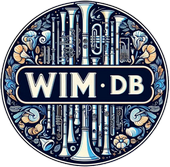
Wind-Instrument Makers Online
A research database from the Musical Instrument Research Catalog (MIRCat)
Preface to the online edition
The earliest inspiration and origins of what has now evolved into the Wind-Instrument Makers database is described by William Waterhouse in the Preface to his 1993 edition of The New Langwill Index:
In 1925 the distinguished organologist Georg Kinsky lectured to the International Musicological Society in Leipzig on recent advances in musical instrument studies and what he saw as the most important tasks to be faced in the future. Stressing the value of adequate museum catalogues, he drew attention also to the importance of the dictionary of makers in complementing these, referring to that of Liitgendorff (Lütgendorff 1922) on strings and to plans he had for compiling one on keyboard makers himself (sadly Kinsky was never to complete this project; his notes on some 2000 keyboard makers were among material lost in 1944). He added: ‘Erwünscht wäre auch ein derartiges Werk über die Blasinstrumentenmacher, eine Aufgabe, die jedoch nur auf den Wege eingehender archivalischer Einzelforschung zu lösen wäre’ [‘there is also the need for a similar work dealing with wind-instrument makers; this would however be a task that could only be carried out by means of detailed archival research’] (‘Stand und Aufgaben der neueren Instrumentenkunde’ I.M.G.Kongreßbericht (Leipzig 1925)).
It was the Edinburgh accountant and amateur bassoonist Lyndesay Graham Langwill who was to respond to this challenge 35 years later. By the time his Index appeared, he had already been working for over 25 years on it; the next 20 were to be spent bringing out successive editions in response to a steady demand from collectors, curators and scholars throughout the world. Recognized everywhere as an indispensable tool of reference, it has remained the only work in its field. After his death in 1983 it would have been unthinkable for this pioneering work not to be continued; this New Langwill Index sets out to do.
As Waterhouse continued in his preface, we too promise “an entirely new work rather than a revision” of earlier editions. The digital revolution has brought many advantages: the ability to search the data instantaneously; the potential to add new scholarship as it emerges; freedom from limitations of space once imposed by costs of printing and distribution; and universal access for everyone, from anywhere, at any time.
The scope of instrument makers covered in the last print edition had been narrowed to include those active before the middle of the twentieth century, but the WIM-db now returns to Langwill’s prior ambition to include contemporary makers as well. While the selection of instruments is much broader than the prior edition, they remain only exemplars and not a comprehensive accounting. Additional instrument types include makers of: bagpipes, fagottino, tenora, and tenoroons.
Langwill and Waterhouse used the term “index” to title their publications, reflecting the earliest origins from Langwill’s index cards developed as an aid in identifying an instrument’s maker and date of manufacture. The selection of data fields and the extent of information captured so far remains optimized for that purpose. This new online resource, however, has the potential to serve a broader purpose, and is already a fitting repository for the latest information.
William Waterhouse mused that his Index would someday be available as a database “…permitting the computer-aided extraction of data” and “…that this will provide a research tool of which use can be made in the future.” We hope his legacy will be well served by the WIM-db.
© 2025 Wind Instrument Makers Online